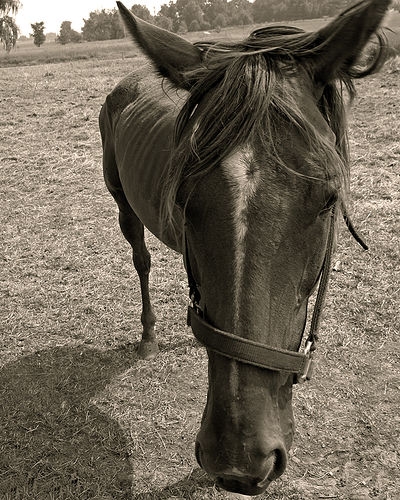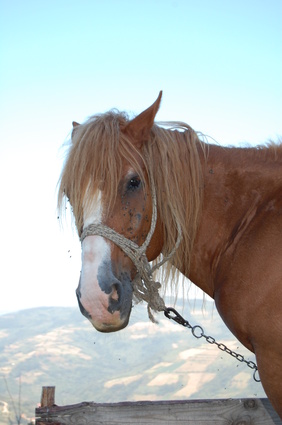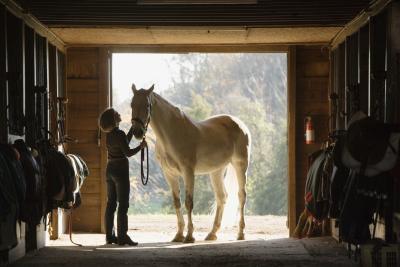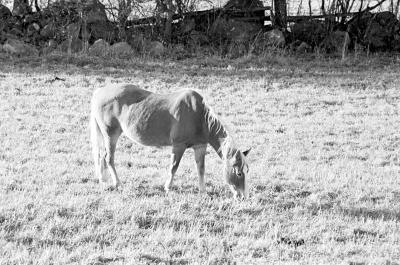
Equine Gastric Ulcer Syndrome (EGUS) is a term that has been used to describe stomach ulcers in horses as well as foals. Stomach ulcers occur due to long term exposure of the digestive acids that the horse's stomach continuously secretes. It has been reported that 25 to 50 percent of foals and at the same time 60 to 90 percent of adult horses suffer from gastric ulcers. Of course age, performance as well as evaluated populations also depends upon the intensity of the disease. Pet medications, of course can go a long way in minimizing the problem.
The stomach of the horse
The horse's stomach can be divide into the glandular region and the esophageal or the non-glandular region. About one-third of the horse's stomach is without any gland. This is the esophageal region or the glandular region. The remaining two-thirds contain special glands which secrete hydrochloric acid, pepsin and mucus. A horse's stomach secretes sufficient amount of hydrochloric acid all day long even without the presence of feed material. In case of foals, gastric acids can start to secrete as early as when they might be around two days old.
How to diagnose equine gastric ulcers?
Sometimes, it might happen that a horse might not easily show outward symptoms of stomach ulcers. But you can look out for certain signs that might suggest that your horse is having Equine Gastric Ulcer Syndrome (EGUC).
Symptoms of equine stomach ulcer
What sort of treatments and medicines are available for equine gastric ulcers?
Along with minimal stress and plenty of time in the pasture, you can greatly reduce equine stomach ulcers with proper medications like Gastrogard. (Omeperazole) which is considered to be one of the most favored medicine for horses with stomach ulcers. It is usually found in paste form and should be given to horses once daily for 28 days. Along with minimizing the syndrome, it is also found to be very effective in preventing the disease from occurring again. Before administering any sort of medicine to your horse, you should take the advice of your vet who can give a proper follow-up on the problem.
 How to Put Weight on a Horse in Poor Condition
How to Put Weight on a Horse in Poor Condition
How to Put Weight on a Horse in Poor Condition
How to Put Weight on a Horse in Poor Condition
 How Can I Get My Horse to Stop Eating Wood?
How Can I Get My Horse to Stop Eating Wood?
How Can I Get My Horse to Stop Eating Wood?
How Can I Get My Horse to Stop Eating Wood?
 Wood Types for Horse Stalls
Wood Types for Horse Stalls
Wood Types
Wood Types for Horse Stalls
Wood Types for Horse Stalls
Wood Types
 How to Gait a Horse
How to Gait a Horse
How to Gait a Hors
How to Gait a Horse
How to Gait a Horse
How to Gait a Hors
 How to Fatten Up a Skinny Horse
How to Fatten Up a Skinny Horse
How to
How to Fatten Up a Skinny Horse
How to Fatten Up a Skinny Horse
How to
Copyright © 2005-2016 Pet Information All Rights Reserved
Contact us: www162date@outlook.com